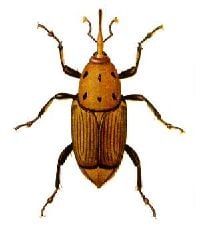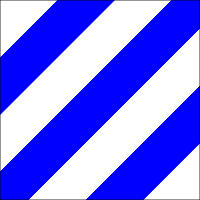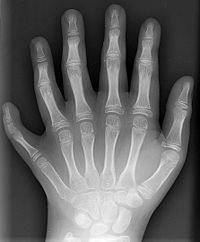6 (number)
6
| |
|
List of numbers — Integers | |
| Cardinal | 6 six |
| Ordinal | 6th sixth |
| Numeral system | senary |
| Factorization | |
| Divisors | 1, 2, 3, 6 |
| Roman numeral | VI |
| Roman numeral (Unicode) | Ⅵ, ⅵ |
| Arabic | ٦ |
| Arabic (Urdu) | ۶ |
| Amharic | ፮ |
| Bengali | ৬ |
| Chinese numeral | 六,陆 |
| Devanāgarī | ६ |
| Hebrew | ו (Vav) |
| Khmer | ៦ |
| Thai | ๖ |
| prefixes | hexa-/hex- (from Greek)
sexa-/sex- (from Latin) |
| Binary | 110 |
| Octal | 6 |
| Duodecimal | 6 |
| Hexadecimal | 6 |
6 (six) is a number, numeral, and glyph that represents the number. It is the natural number[1] that follows 5 and precedes 7. It is an integer and a cardinal number, that is, a number that is used for counting.[2] In addition, it is classified as a real number,[3] distinguishing it from imaginary numbers.
Evolution of the glyph
The evolution of our modern glyph for 6 appears rather simple when compared with that for the other numerals. Our modern 6 can be traced back to the Brahmins of India, who wrote it in one stroke like a cursive lowercase e rotated 45 degrees clockwise. Gradually, the upper part of the stroke (above the central squiggle) became more curved, while the lower part of the stroke (below the central squiggle) became straighter. The Ghubar Arabs dropped the part of the stroke below the squiggle. From there, the European evolution to our modern 6 was very straightforward, aside from a flirtation with a glyph that looked more like an uppercase G.[4]
On the seven-segment displays of calculators and watches, 6 is usually written with six segments. Some historical calculator models use just five segments for the 6, by omitting the top horizontal bar. This glyph variant has not caught on. For calculators that can display results in hexadecimal, a 6 that looks like a B is not practical.
Just as in most modern typefaces, in typefaces with text figures the 6 character usually has an ascender, for example, in ![]() .
.
This numeral resembles an inverted 9. To disambiguate the two on objects and documents that could be inverted, the 6 has often been underlined, both in handwriting and on printed labels.
In mathematics
Six is the second smallest composite number, its proper divisors being 1, 2, and 3. Since six equals the sum of these proper divisors, six is a perfect number. As a perfect number, 6 is related to the Mersenne prime 3, since 21(22 - 1) = 6. (The next perfect number is 28.) Six is the only number that is both the sum and the product of three consecutive positive numbers.[5]
Six is a unitary perfect number, a harmonic divisor number and a highly composite number. The next highly composite number is 12.
5 and 6 form a Ruth-Aaron pair under either definition.
The smallest non-abelian group is the symmetric group S3 which has 3! = 6 elements.
S6, with 720 elements, is the only finite symmetric group which has an outer automorphism. This automorphism allows us to construct a number of exceptional mathematical objects such as the S(5,6,12) Steiner system, the projective plane of order 4 and the Hoffman-Singleton graph. A closely related result is the following theorem: 6 is the only natural number n for which there is a construction of n isomorphic objects on an n-set A, invariant under all permutations of A, but not naturally in 1-1 correspondence with the elements of A. This can also be expressed category theoretically: consider the category whose objects are the n element sets and whose arrows are the bijections between the sets. This category has a non-trivial functor to itself only for n=6.
Six similar coins can be arranged around a central coin of the same radius so that each coin makes contact with the central one (and touches both its neighbors without a gap), but seven cannot be so arranged. This makes 6 the answer to the two-dimensional kissing number problem. The densest sphere packing of the plane is obtained by extending this pattern to the hexagonal lattice in which each circle touches just six others.
6 is the largest of the four all-Harshad numbers.
A six-sided polygon is a hexagon, one of the three polygons capable of tiling the plane. Figurate numbers representing hexagons (including six) are called hexagonal numbers. Six is also an octahedral number. It is a triangular number and so is its square (36).
There are six basic trigonometric functions.
There are six convex regular polytopes in four dimensions.
Six is the binary complement of number nine:
6 = 0110 9 = 1001
In numeral systems
| Base | Numeral system | |
|---|---|---|
| 2 | binary | 110 |
| 3 | ternary | 20 |
| 4 | quaternary | 12 |
| 5 | quinary | 11 |
| 6 | senary | 10 |
| over 6 (decimal, hexadecimal) | 6 | |
In base 10, 6 is a 1-automorphic number.
List of basic calculations
- Multiplication
| Multiplication | 1 | 2 | 3 | 4 | 5 | 6 | 7 | 8 | 9 | 10 |
|---|---|---|---|---|---|---|---|---|---|---|
| 6 | 12 | 18 | 24 | 30 | 36 | 42 | 48 | 54 | 60 |
| Multiplication | 11 | 12 | 13 | 14 | 15 | 16 | 17 | 18 | 19 | 20 |
|---|---|---|---|---|---|---|---|---|---|---|
| 66 | 72 | 78 | 84 | 90 | 96 | 102 | 108 | 114 | 120 |
| Multiplication | 21 | 22 | 23 | 24 | 25 | 50 | 100 | 1000 | |
|---|---|---|---|---|---|---|---|---|---|
| 126 | 132 | 138 | 144 | 150 | 300 | 600 | 6000 |
- Division
| Division | 1 | 2 | 3 | 4 | 5 | 6 | 7 | 8 | 9 | 10 |
|---|---|---|---|---|---|---|---|---|---|---|
| 6 | 3 | 2 | 1.5 | 1.2 | 1 | 0.75 | 0.6 | |||
| 0.5 | 1 | 1.5 |
| Division | 11 | 12 | 13 | 14 | 15 |
|---|---|---|---|---|---|
| 0.5 | 0.4 | ||||
| 2 | 2.5 |
- Exponentiation
| Exponentiation | 1 | 2 | 3 | 4 | 5 | 6 | 7 | 8 | 9 | 10 |
|---|---|---|---|---|---|---|---|---|---|---|
| 6 | 36 | 216 | 1296 | 7776 | 46656 | 279936 | 1679616 | 10077696 | 60466176 | |
| 1 | 64 | 729 | 4096 | 15625 | 46656 | 117649 | 262144 | 531441 | 1000000 |
| Exponentiation | 11 | 12 | 13 |
|---|---|---|---|
| 362797056 | 2176782336 | 13060694016 | |
| 1771561 | 2985984 | 4826809 |
In science
- The atomic number of carbon
- The number of carbon atoms and carbon-carbon bonds in benzene
- The number of known quarks and leptons
- The number of tastes in traditional Indian Medicine called Ayurveda. They are: sweet, sour, salty, bitter, pungent, and astringent. These tastes are used to suggest a diet based on the symptoms of the body
- The SI prefix for 10006 is exa (E), and for its reciprocal atto (a).
- A hexapod is an animal with six legs; this includes all insects.
Astronomy
- The Roman numeral VI (usually) stands for the sixth-discovered satellite of a planet or minor planet (such as Jupiter VI).
- The Roman numeral VI stands for subdwarfs in the Yerkes spectral classification scheme.
- The Saros number of the solar eclipse series which began on March 27, 2673 B.C.E. and ended on May 3, 1393 B.C.E. The duration of Saros series 6 was 1280.14 years, and it contained 72 solar eclipses.[6]
- The Saros number of the lunar eclipse series which began on August 4, 2624 B.C.E. and ended on February 10, 1091 B.C.E. The duration of Saros series 6 was 1532.56 years, and it contained 86 lunar eclipses.[7]
In technology
- 6 is the resin identification code used in recycling to identify polystyrene
- The "six meter band" in amateur radio includes the frequencies from 50 to 54 MHz
- The audio component of any broadcast channel 6 is located at 87.7 MHz. This means that people can listen to TV stations using an FM radio when a television is not nearby.
- The measuring instrument called a sextant got its name because its shape forms one sixth of a whole circle
- The number of fundamental flight instruments lumped together on a cockpit display, called the six-pack
In religion
Judaism
- According to the biblical book of Genesis, God created man on the sixth day
- There are six points on the Star of David
- Six is the number of orders of the Mishnah
- Six is the number of symbolic foods placed on the Passover Seder Plate
- The Jewish holiday of Shavuot starts on the sixth day of the Hebrew month of Sivan
Christianity
- 666 is considered the Number of the Beast
In music
- There are six semitones in a tritone
- There are six strings on a standard guitar
- There are six basic holes or keys on most woodwind instruments (for example, pennywhistle, clarinet, saxophone, bassoon). These holes or keys are usually not given numbers or letters in the fingering charts.
- A group of six musicians is called a sextet
- Six is the number of completed symphonies by Peter Tchaikovsky and Bohuslav Martinů, and the number of Brandenburg Concertos of Johann Sebastian Bach
- The concerti grossi Opus 3, organ concertos Opus 4 and Opus 7 (each) by Georg Frideric Handel
- The number of string quartets of Béla Bartók
- In many cases (usually in rock music) an album's feature track is located on the 6th track of the recording medium
- The French composers Georges Auric, Louis Durey, Arthur Honegger, Darius Milhaud, Francis Poulenc, and Germaine Tailleferre were part of a group known as Les Six ("The Six" in English) in the 1920s
In sports
- In American and Canadian football, six is the number of points received for a touchdown
- In rugby union, six is the position of the blindside flanker
- In rugby league, six is the position of 5/8
- In football (soccer), the number of substitutes combined by both teams, that are allowed in the game
- In baseball, six represents the shortstop's position
- In Australian Rules football, six points are received for a goal
- In cricket, a "six" or "sixer" is a shot in which the ball clears the boundary without bouncing, scoring six runs. Also, there are six balls to an over.
- In ice hockey, there are six players per team, including the goaltender, on the ice at any one time, excluding penalty situations
- The National Hockey League and National Basketball Association are comprised of six divisions each
- In some sports, 6 goals is known as a double hat trick, but it is very hard to accomplish
Miscellany
- In the ancient Roman calendar, Sextilis was the sixth month. After the Julian reform, June became the sixth month and Sextilis was renamed August
- Sextidi was the sixth day of the decade in the French Revolutionary calendar.
- The standard term in office for a United States senator is six years.
- The name of the smallest group of Cub Scouts, traditionally consisting of six boys and is led by a "sixer." However, this is not always the case.
- The number of feet below ground level a coffin is traditionally buried; thus, the phrase "six feet under" means that a person (or thing, or concept) is dead.
- The number of inhabited continents, and the total number of continents if Eurasia (Europe plus Asia) is considered a single continent
- The number of large geyser fields in the world
- The number of sides on a cube, hence the highest number on a standard dice
- The highest number on one end of a standard domino
- The number of dots in a Braille cell
- It is said that there is no more than six degrees of separation between any two people on Earth
- Extra-sensory perception is sometimes called the "sixth sense"
- Six Cardinal Directions: North, south, east, west, up, and down
- The Six Dynasties form part of Chinese history
- 6 is a lucky number in Chinese culture
- "Six" is used as an informal slang term for the British Secret Intelligence Service, MI6
- In the military, six is used as slang for rear, derived from the position of the number at the bottom of a 12-hour clock face, as in "Cover my six."
- The number of Australian states
- Northern Ireland is known as the Six Counties
Hexa is Greek for "six." Thus:
- A hexahedron is a polyhedron with six faces, with a cube being a special case
- An hexagon is a regular polygon with six sides
- L' Hexagone is a French nickname for the continental part of France

- Hexameter is a poetic form consisting of six feet per line
- "Hexadecimal" combines hexa- with the Latinate decimal to name a number base of 16
- A "hex nut," of course, is a nut with six sides, and a hex bolt has a six-sided head
- The prefix "hexa-" also occurs in the systematic name of many chemical compounds, such as "hexamethyl"
Sex- is a Latin prefix meaning "six." Thus:
- Six babies delivered in one birth are sextuplets. The first set of sextuplets of whom all six survived are the Dilley sextuplets.
- People with sexdactyly have six fingers on each hand.
See also
Notes
- ↑ A natural number is any number that is a positive integer, such as 1, 2, 3, 4, and so forth. Often, the number 0 is also called a natural number.
- ↑ A cardinal number indicates the quantity of things, but not the order in which they occur. By contrast, ordinal numbers are first, second, third, and so on, indicating their positions in a series.
- ↑ A real number is a number that can be given by a finite or infinite decimal representation. The term "real number" was coined to distinguish it from an "imaginary number." The set of real numbers includes rational and irrational numbers, which can be positive, negative, or zero.
- ↑ Georges Ifrah, The Universal History of Numbers: From Prehistory to the Invention of the Computer (New York: Wiley, 2000, ISBN 0471393401).
- ↑ Peter M. Higgins, Number Story: From Counting to Cryptography (London: Copernicus, 2008, ISBN 978-1848000001).
- ↑ NASA Eclipse Website, Saros Series 6 Saros Series Catalog of Solar Eclipses. Retrieved October 7, 2022.
- ↑ NASA Eclipse Website, Saros Series 6 Catalog of Lunar Eclipse Saros Series. Retrieved October 7, 2022.
ReferencesISBN links support NWE through referral fees
- Cameron, Peter J., and Jacobus Hendricus van Lint. Designs, Graphs, Codes and Their Links. Cambridge: Cambridge University Press, 2000. ISBN 0521423856
- Flegg, Graham. Numbers: Their History and Meaning. Mineola, NY: Dover Publications, 2002. ISBN 0486421651
- Higgins, Peter M. Number Story: From Counting to Cryptography. London: Copernicus, 2008. ISBN 978-1848000001
- Ifrah, Georges. The Universal History of Numbers: From Prehistory to the Invention of the Computer. Translated by David Bellos et al. New York: Wiley, 2000. ISBN 0471393401
- McLeish, John. The Story of Numbers: How Mathematics Has Shaped Civilization. New York: Fawcett Columbine, 1994. ISBN 0449909387
- Menninger, Karl. Number Words and Number Symbols: A Cultural History of Numbers. New York: Dover Publications, 1992. ISBN 0486270963
- Wells, D.G. The Penguin Dictionary of Curious and Interesting Numbers. London: Penguin Books, 1998. ISBN 0140261494
External links
All links retrieved June 13, 2023.
- The Meaning of Numbers: The Number 6 Meaning of Numbers in the Bible.
- The Significance of The Number Six by Hillel ben David (Greg Killian)
Credits
New World Encyclopedia writers and editors rewrote and completed the Wikipedia article in accordance with New World Encyclopedia standards. This article abides by terms of the Creative Commons CC-by-sa 3.0 License (CC-by-sa), which may be used and disseminated with proper attribution. Credit is due under the terms of this license that can reference both the New World Encyclopedia contributors and the selfless volunteer contributors of the Wikimedia Foundation. To cite this article click here for a list of acceptable citing formats.The history of earlier contributions by wikipedians is accessible to researchers here:
The history of this article since it was imported to New World Encyclopedia:
Note: Some restrictions may apply to use of individual images which are separately licensed.






















